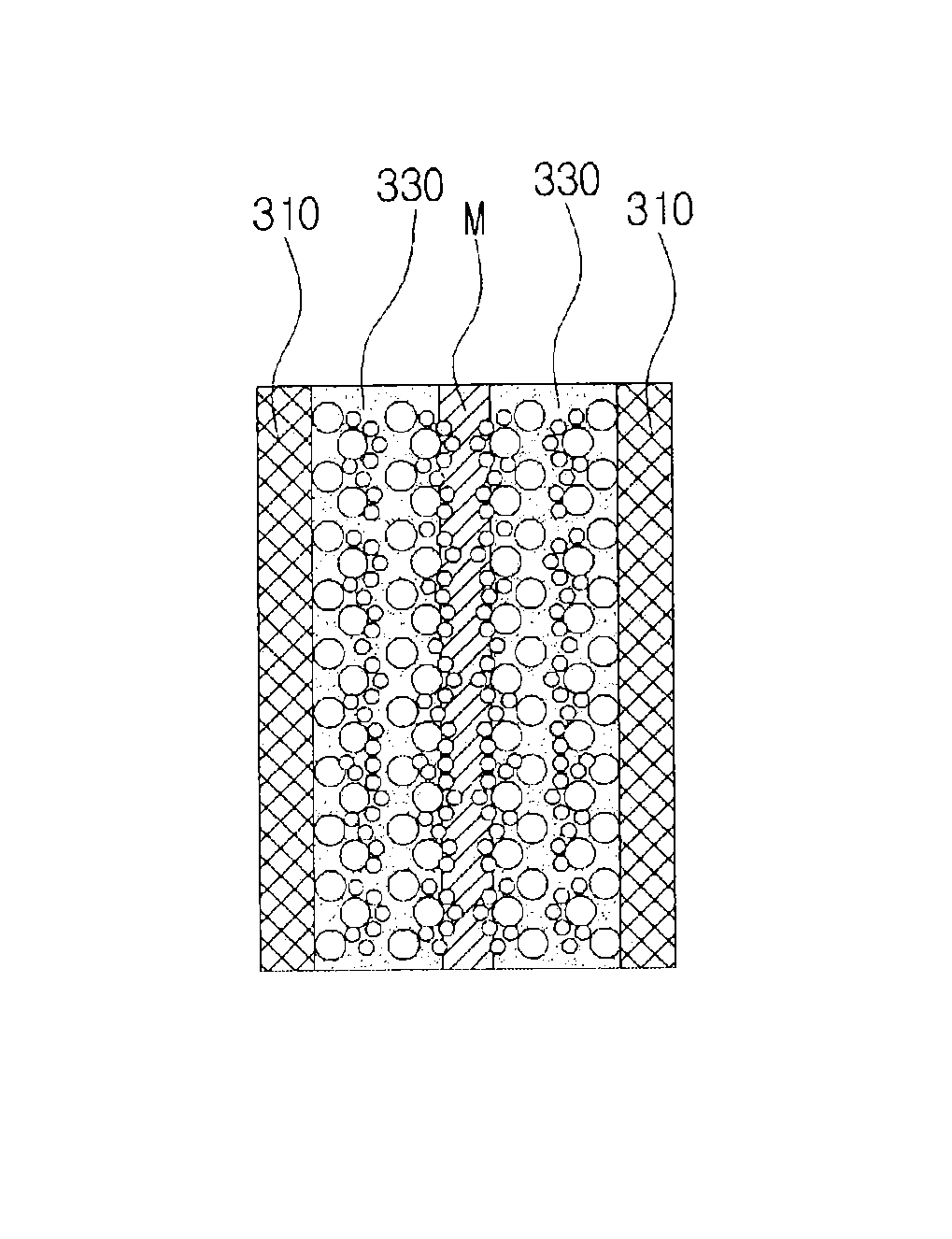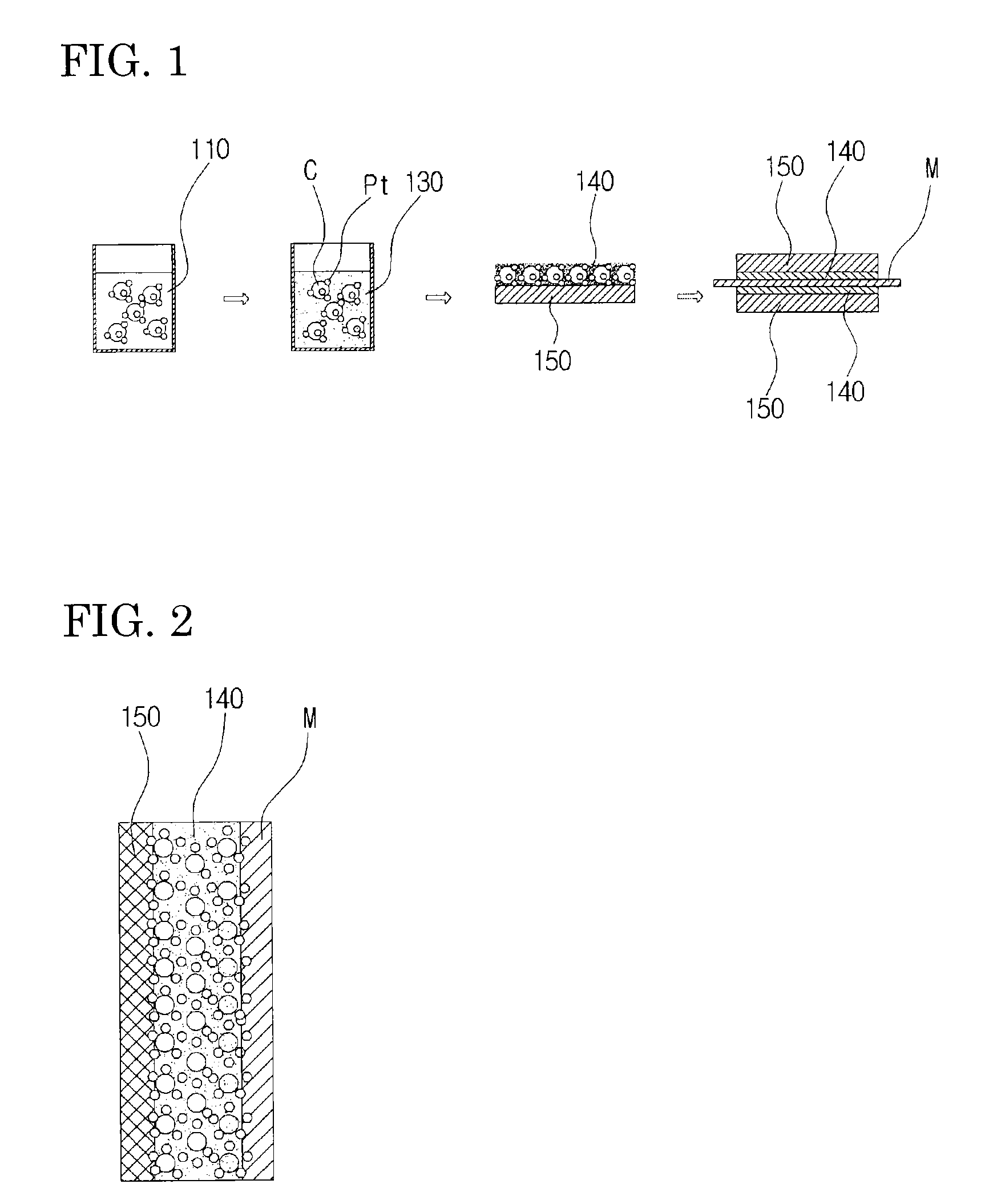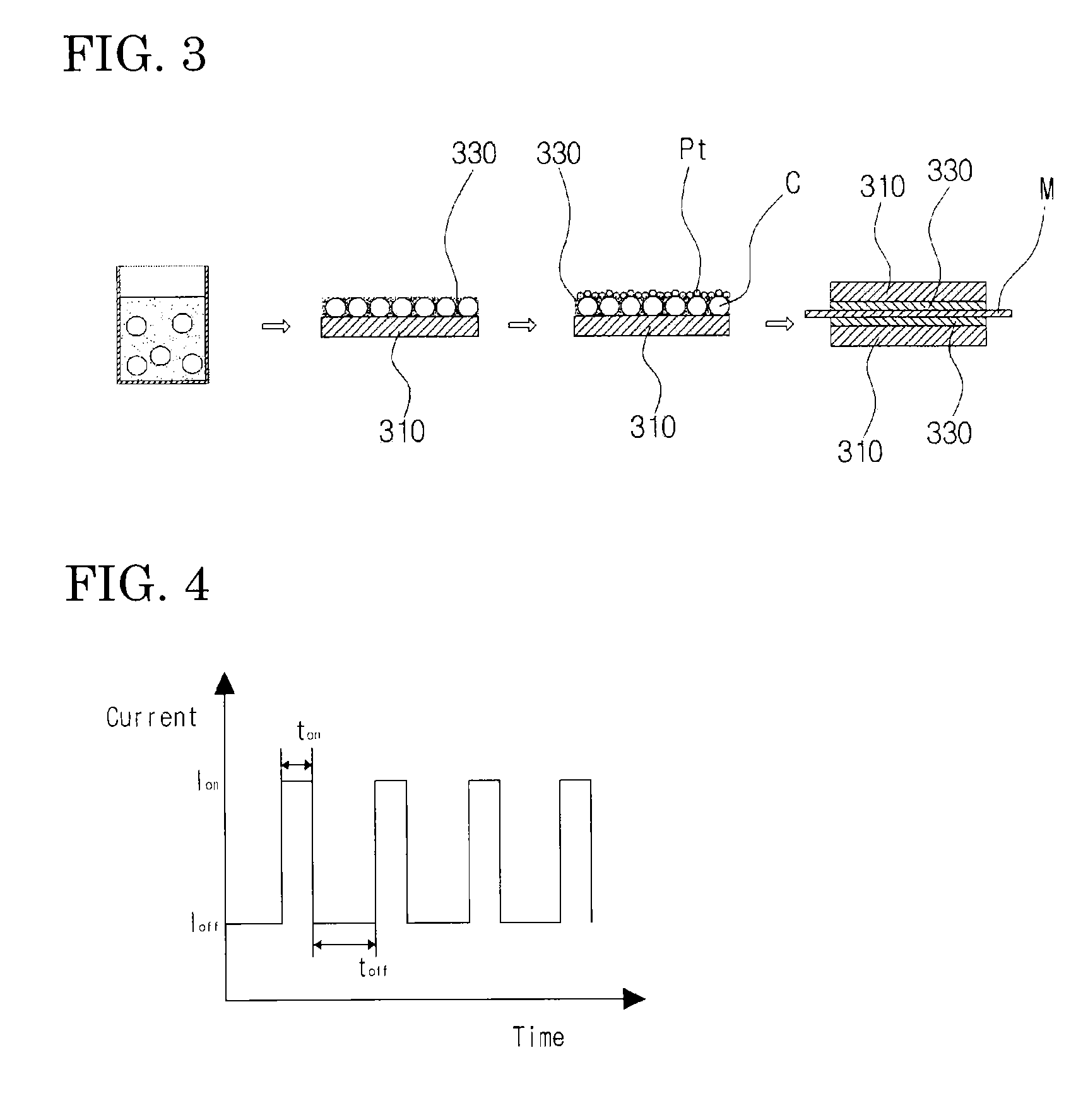Methods for preparing carbon black sheet with metallic nanoparticle thin layer by electrophoresis deposition and membrane electrode assembly (MEA) for proton exchange membrane fuel cell
a proton exchange membrane and carbon black sheet technology, applied in cell components, electrochemical generators, coatings, etc., can solve the problems of platinum catalyst among elements constituting mea taking up about 70% of material costs, platinum catalyst may not be selectively formed on a specific site in the catalyst layer, and reduce manufacturing costs significantly. , the effect of enhancing the efficiency of metal catalys
- Summary
- Abstract
- Description
- Claims
- Application Information
AI Technical Summary
Benefits of technology
Problems solved by technology
Method used
Image
Examples
example 2
[0061]Unlike in Example 1, a carbon black sheet with a thin layer of platinum nanoparticles was manufactured by maintaining the pH of the platinum nanoparticle suspension electrolyte at 2 and changing the dwell time ton from 0.15 sec to 0.75 sec. FE-SEM images of carbon black sheets with a thin layer of platinum nanoparticles manufactured are shown in FIGS. 12 to 15. As shown in FIGS. 12 to 15, it was confirmed that platinum nanoparticles were deposited on the carbon black layer under all the dwell time conditions, and the amount of platinum nanoparticles deposited could be controlled by controlling the dwell time.
example 3
[0067]Unlike in Example 1, a gold (Au) nanoparticle suspension electrolyte was used to prepare a carbon black sheet with a thin layer of gold nanoparticles instead of the platinum nanoparticle suspension electrolyte.
[0068]In this case, HAuCl44H2O and sodium citrate were used as a starting material for synthesis of a gold nanoparticle colloid and a reducing agent, respectively. In order to synthesize the gold nanoparticle colloid, 1% of HAuCl44H2O was first prepared, 1 ml of the reagent was diluted in 499 ml of H2O, the resulting aqueous solution was vigorously stirred while being heated to about 99° C., and then 28 ml of 1% sodium citrate was added for preparation. The gold colloid synthesized had an average diameter of 15 nm.
[0069]A mixed solution of 1 M H2SO4 and 1 M CH3OH was used as an electrolyte solution, and 50 ml of a gold nanoparticle colloid solution was mixed with 200 ml of the electrolyte solution to prepare a gold (Au) nanoparticle suspension electrolyte. Gold nanoparti...
example 4
[0071]A carbon black sheet with a thin layer of gold nanoparticles was manufactured in the same manner as in Example 3, then a complex deposition of platinum nanoparticles was performed on a gold nanoparticle-supported carbon black by maintaining Ion and Ioff at 30 mA / cm2 and 0 mA / cm2, respectively, as in Example 1, setting ton at 0.25 sec, and adjusting the pH of an electrolyte in which platinum nanoparticles were suspended to 2, and the FE-SEM image is shown in FIG. 19.
[0072]It is confirmed from the SEM image in FIG. 19 that platinum nanoparticles were deposited simultaneously on the carbon black layer and on gold nanoparticles on the carbon black layer, and it is determined that platinum nanoparticles were deposited more on gold nanoparticles with a higher electric conductivity than on the carbon black layer with a lower electric conductivity to form complex nanoparticles. When pulse electroplating and a metal nanoparticle suspension electrolyte are used together, it can be confi...
PUM
| Property | Measurement | Unit |
|---|---|---|
| pH | aaaaa | aaaaa |
| temperature | aaaaa | aaaaa |
| pH | aaaaa | aaaaa |
Abstract
Description
Claims
Application Information
 Login to View More
Login to View More - R&D
- Intellectual Property
- Life Sciences
- Materials
- Tech Scout
- Unparalleled Data Quality
- Higher Quality Content
- 60% Fewer Hallucinations
Browse by: Latest US Patents, China's latest patents, Technical Efficacy Thesaurus, Application Domain, Technology Topic, Popular Technical Reports.
© 2025 PatSnap. All rights reserved.Legal|Privacy policy|Modern Slavery Act Transparency Statement|Sitemap|About US| Contact US: help@patsnap.com



